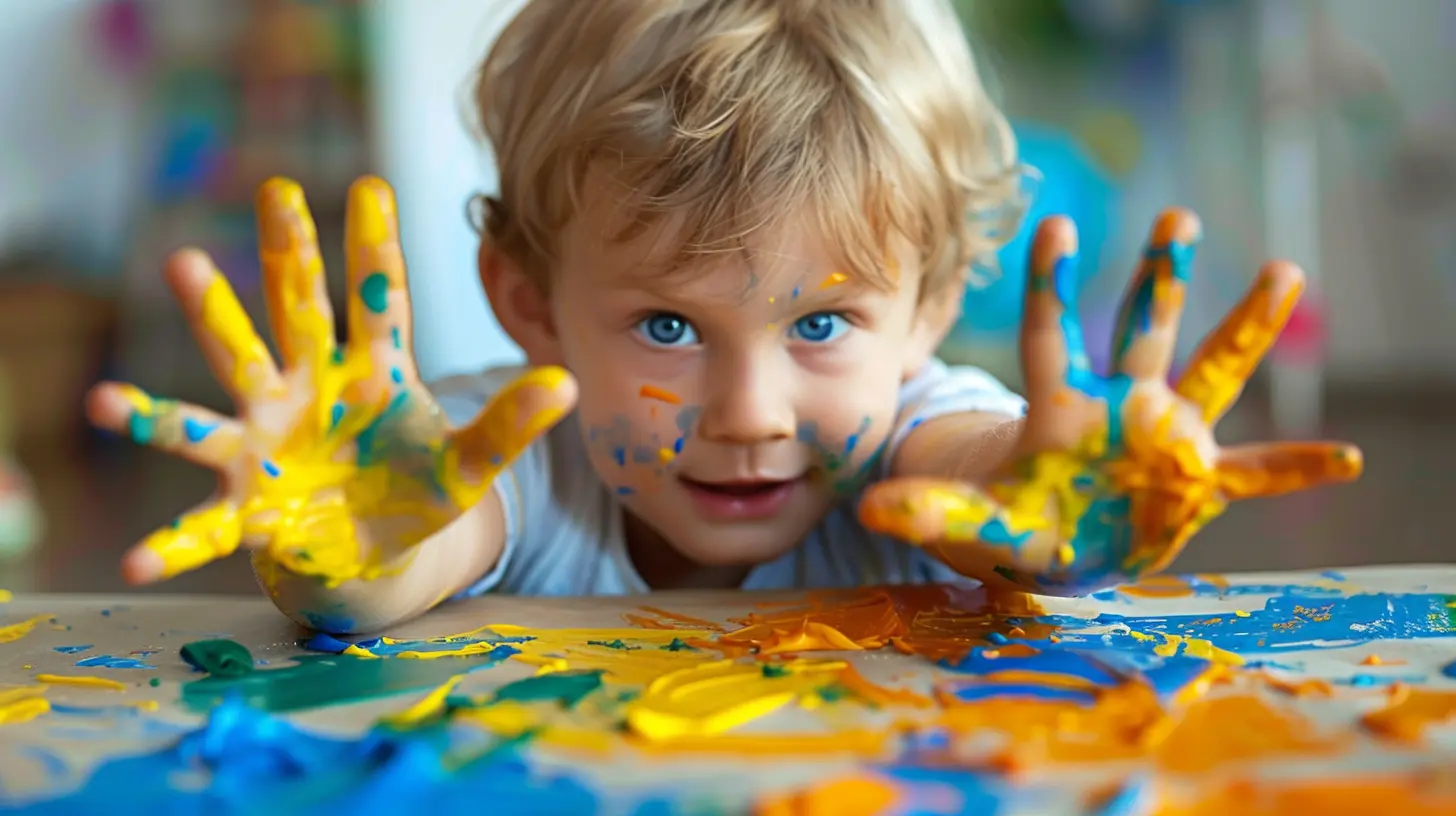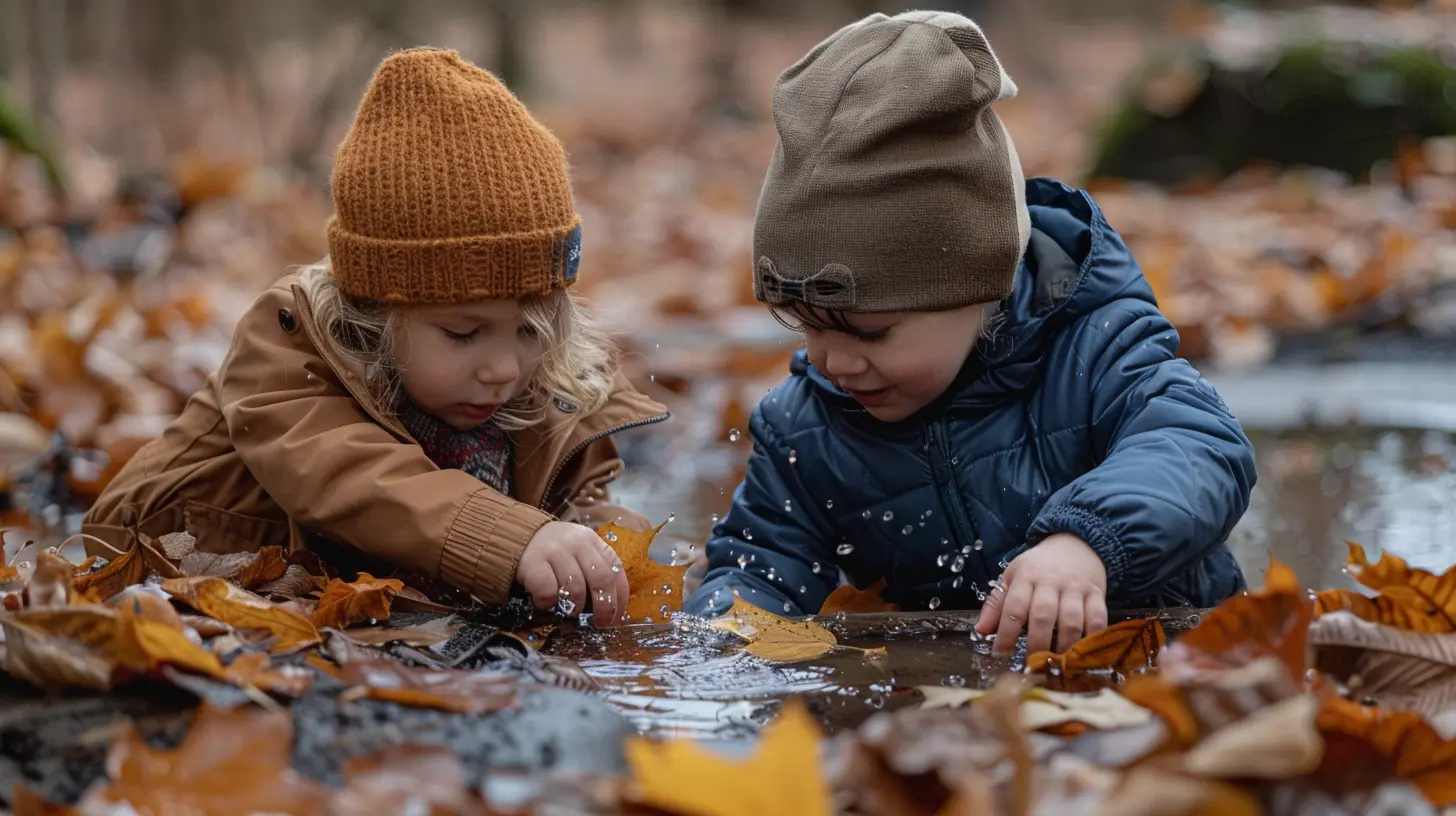Creative Ways to Teach Your Preschooler About Sharing
6 August 2025
Let’s be real for a second — teaching your preschooler to share is kind of like teaching a cat to take a bath. It’s chaotic, messy, and someone usually ends up crying (spoiler alert: it’s often you). But it’s also one of those skills that’ll make your kid a better human in the long run. So how do we go from “Mine! Mine! MINE!” to “Here, you can play with it too!” without pulling our hair out?
You’re in the right place, my friend. Grab your coffee (or wine — I don’t judge), and let's dig into some creative ways to teach your toddler that life is better when we share.
Why Is Sharing So Darn Hard for Preschoolers?
Before we dive into the “how,” let’s talk about the “why.” Preschoolers are tiny humans with big feelings. Their brains are still under construction, especially the part responsible for empathy, patience, and impulse control. Asking a 3-year-old to share their most favorite toy is like asking a squirrel to give up its last acorn.They’re not being little tyrants on purpose — okay, maybe a little — but mostly, they’re just learning how to exist in a society that expects them to be kind and cooperative. So let’s meet them where they are: colorful toys, sticky fingers, and all.
1. Turn Sharing Into A Game (Because Toddlers Love Games)
You know what’s 1000x more effective than giving a lecture? Play. If you can make it a game, your preschooler is WAY more likely to engage.🧩 The "Sharing Relay"
- Gather a few toys and sit in a circle (include siblings, friends, or even teddy bears if you have to).- Pass a toy around the circle like a relay baton.
- When the toy lands in someone’s lap, they say one nice thing or make a silly sound.
- Keep passing and laughing.
This works because it makes the act of giving the toy to someone else feel fun rather than a loss.
2. Storytime: Books That Talk About Sharing Without Putting You to Sleep
Kids LOVE stories. And lucky for us, there are books that teach sharing without being preachy or boring.Here are a few crowd-pleasers:
- 📘 Llama Llama Time to Share by Anna Dewdney
- 🐻 Bear Says Thanks by Karma Wilson
- 🐠 The Rainbow Fish by Marcus Pfister (Warning: You’ll need tissues. It’s surprisingly emotional.)
Pro Tip: After reading, talk about the characters. Don’t make it a quiz — just chat. “How do you think Rainbow Fish felt when he gave away his shiny scale?” Easy peasy.
3. Model the Heck Out of It
Kids are expert copycats. They watch our every move, even when we wish they wouldn’t (like when we say “Oh for crying out loud!” in traffic and suddenly they repeat it at Grandma’s house).So next time you’re eating chips, offer one to them and say, “I love sharing my chips with you.” Or let them see you hand your partner the remote and say, “Your turn to pick the show.”
You’ll be amazed how quick they are to mimic that behavior... eventually.
4. Use Playdates as Tiny Social Labs
Playdates are goldmines for teaching life lessons. Yes, there will be tears. Yes, you’ll hear “mine” more times than you can count. But playdates are where sharing muscles grow.How to Set the Stage:
- Pick a few “safe toys” that your child doesn’t have to share. Put them away or talk about them ahead of time.- Choose toys your kid is okay with sharing to put out.
- Stay nearby to coach through conflicts instead of swooping in like a helicopter.
And if things go south, don’t panic. That’s part of the process. Allow room for learning, not perfection.
5. Praise Like a Pro (But Be Specific)
Kids thrive on praise — but not just any kind. “Good job” is nice but vague. “I love how you gave your car to Jamie when he asked” reinforces exactly what they did right.Think of it like planting a seed. The more warmth and attention you give to positive moments, the more likely they’ll grow.
Also, who doesn’t love a toddler grinning ear to ear because they feel like a superhero?
6. Use Toys with Built-in Sharing Vibes
Some toys are just better for sharing. Blocks, magnetic tiles, train tracks — these things naturally invite teamwork.Avoid single-player toys if you’re trying to create sharing opportunities. Nothing tests a friendship harder than one lonely toy in a room full of toddlers.
And bonus tip: Pretend play is magical. A pretend kitchen? Everyone can take turns being chef. A tea set? One pours, one serves, one sips — teamwork all around.
7. Talk It Out, Even if They Don't "Get" It Yet
Your preschooler might not fully understand a TED Talk about emotional intelligence, but they do understand tone, consistency, and empathy.After a sharing “incident,” have a quick convo:
> “I saw you really wanted to keep the truck. It’s hard to let someone else play sometimes. But when we share, we all have more fun. Let’s try again.”
Keep it short, sweet, and loving. You’re planting seeds that might not bloom immediately — but they WILL bloom.
8. Create a Sharing Chart (Because Stickers Are Life)
Kids adore stickers like grown-ups love caffeine. Use that obsession to your advantage.Make a “Sharing Superstar” chart with their name at the top and fun icons or character stickers. Every time they make a kind choice or share without prompting, boom — STICKER TIME.
This system rewards effort, not perfection. You're raising a kind human, not a robot.
9. Turn It Into a DIY Puppet Show
Honestly, grab some socks, draw some eyes on them with a marker, and you’ve got yourself a puppet duo. Puppets can say things you can’t. Like, “Sir Grumpy Sock doesn’t want to share his cereal, but Lady Fuzzy Feet helped him learn it’s nice to take turns.”Your kid will be giggling AND learning — multitasking for the win!
10. Teach “Taking Turns” First
Listen — “sharing” is an abstract concept. Taking turns? That’s step one.Use a kitchen timer or a fun app to create a visible turn-taking system.
> “Okay, it’s your turn for 2 minutes, then Jackson gets a turn. When the bell rings, it's time to swap!”
It gives them control within a boundary, and it avoids you having to referee every five seconds.
11. Let Them Feel the Feels (Even the Ugly Ones)
When you ask a kid to hand over their favorite stuffed giraffe, it might as well be a Supreme court case. So if they burst into tears or throw a tantrum, it’s okay. Deep breath. Let them ride the emotional wave.Empathy doesn’t mean fixing the feeling — it means acknowledging it.
Say something like:
> “I know it’s hard. You really love that giraffe. It's okay to feel upset.”
Normalize it. Accept it. Then move on.
12. Be Patient — Like, Ridiculously Patient
Here comes the hard truth: this takes time. And repetition. And a lot of deep breaths in your pantry while you pretend you're looking for snacks.But guess what? Every time you calmly navigate a sharing situation, you’re building your kid’s social toolbox. One kind word, one high-five, one sticker at a time.
Final Thoughts: Sharing is a Skill, Not a Personality Trait
Let’s stop expecting our toddlers to be naturally generous saints and start treating sharing like the teachable skill it is. Just like tying shoes or using the potty, it takes time, practice, and a whole lot of grace.So next time your kid screams over a toy, remember — you’re not failing. You’re parenting.
And if all else fails? Chocolate. For both of you.
all images in this post were generated using AI tools
Category:
Parenting PreschoolersAuthor:

Max Shaffer
Discussion
rate this article
1 comments
Willow Clark
What a fantastic article! Teaching kids to share can be a fun adventure. I love the creative activities you suggested—especially the games! It’s amazing how play can make learning those important lessons enjoyable for both us and our little ones!
August 13, 2025 at 3:18 PM

Max Shaffer
Thank you for your kind words! I'm glad you found the activities helpful and fun for teaching sharing!


